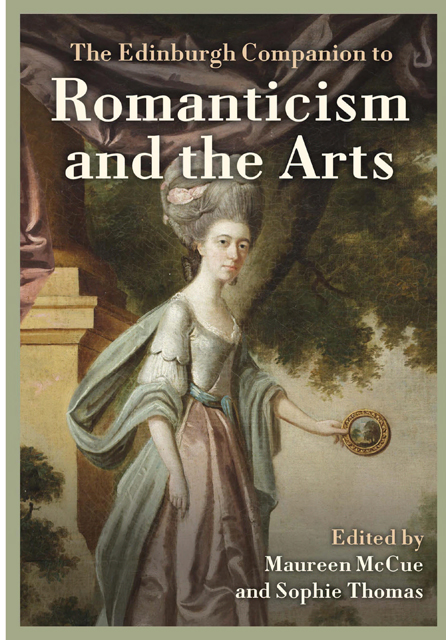11 - Portraiture: Commerce and Celebrity
Published online by Cambridge University Press: 25 April 2023
Summary
The 1790 Royal Academy exhibition has frequently been seen as a transitional moment in the history of British portrait painting. It was the last exhibition to which Sir Joshua Reynolds contributed. Reynolds, founding president of the Academy and the most influential portrait painter of the preceding decades, sent in seven works, the most ambitious of which was a large, allegorical portrait of the celebrated singer, Mrs Billington as St Cecilia (fig. 11.1). Regarded as a valedictory moment in Reynolds’s career – he was to die in February 1792 – the exhibition is also seen as the moment of arrival of Thomas Lawrence, the painter who would eventually succeed Reynolds as President of the RA and who, by and large, dominated portrait painting in the following four decades. The first part of this chapter will focus on the oil portrait through the careers of Lawrence and his contemporaries while other media, such as sculpture and the miniature, will be explored in a wider discussion of portraiture and celebrity.
Notable among the twelve portraits that Lawrence submitted to the 1790 RA was his portrait of Queen Charlotte, a portrait that in its ‘frankness and particularity’ revealed a new approach to royal portraiture by an artist who was very young – then only twenty – to receive such a prestigious commission (Albinson, Funnell and Peltz 2010, 88). But it was Lawrence’s portrait of the comic actress, Elizabeth Farren, Later Countess of Derby (fig. 11.2), that most struck contemporaries and that was contrasted to Reynolds’s Mrs Billington. Grand and elevated in character, Reynolds’s portrait of Billington fulfilled his notion of portraiture as rising above ‘particularity’ and exemplifies the aspect of his female portraits that cast women in mythological or allegorical roles. By contrast, Lawrence’s portrait of Farren, which hung very close to the Reynolds in the Great Room of the Academy, appears fresh and immediate, its subject set in a summer landscape wearing fashionable contemporary dress and regarding the viewer directly. The contrast between the two paintings, and the sense of a succession, was relished by contemporary critics. According to one, Lawrence’s painting was ‘completely Elizabeth Farren; arch, careless, spirited, elegant, engaging’ (cited in Hallett 2014, 438). The English Chronicle thought Lawrence’s picture ‘far superior’ to that of Reynolds while the Public Advertiser agreed, noting that ‘there is now a young artist eminently qualified to take [Reynolds’s] place’ (cited in Hallett 2014, 438).
- Type
- Chapter
- Information
- The Edinburgh Companion to Romanticism and the Arts , pp. 201 - 219Publisher: Edinburgh University PressPrint publication year: 2022



